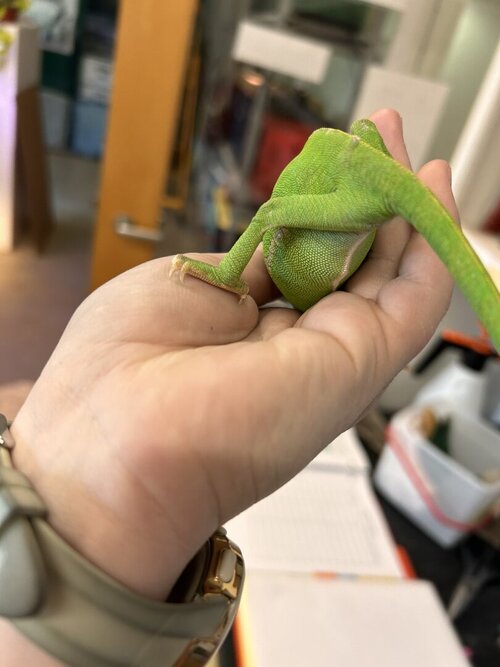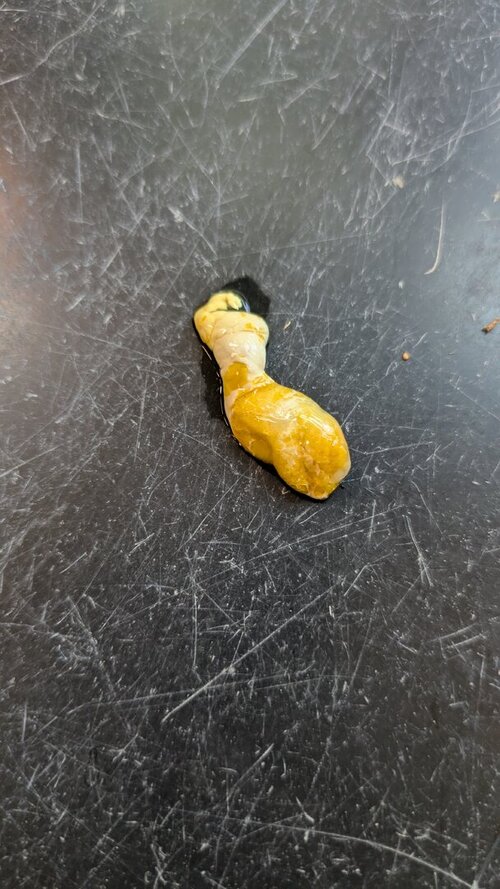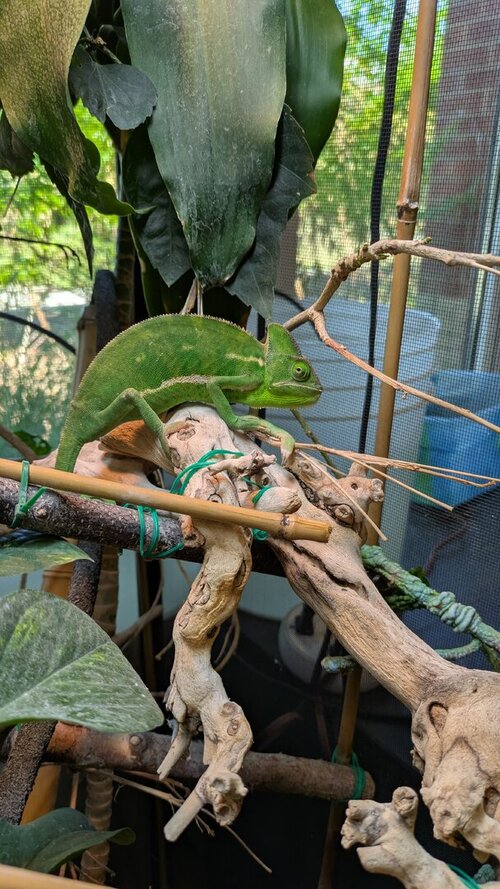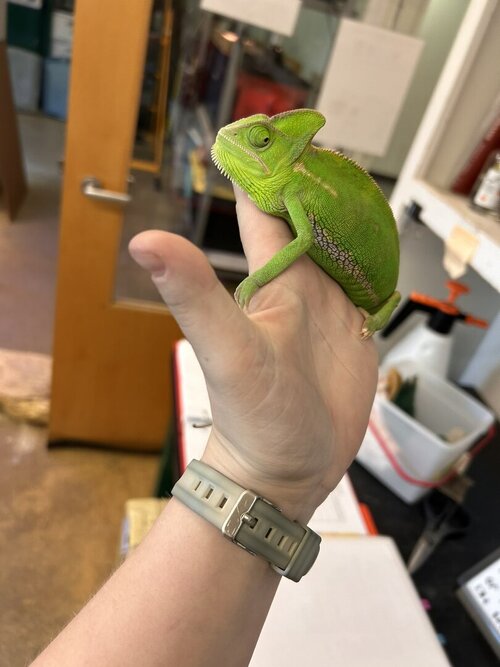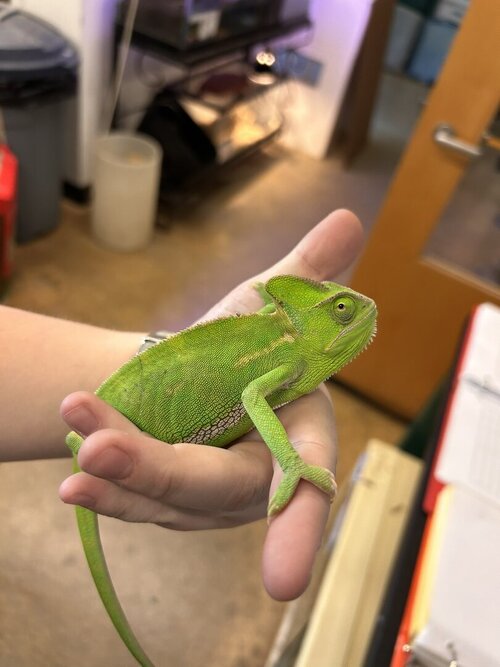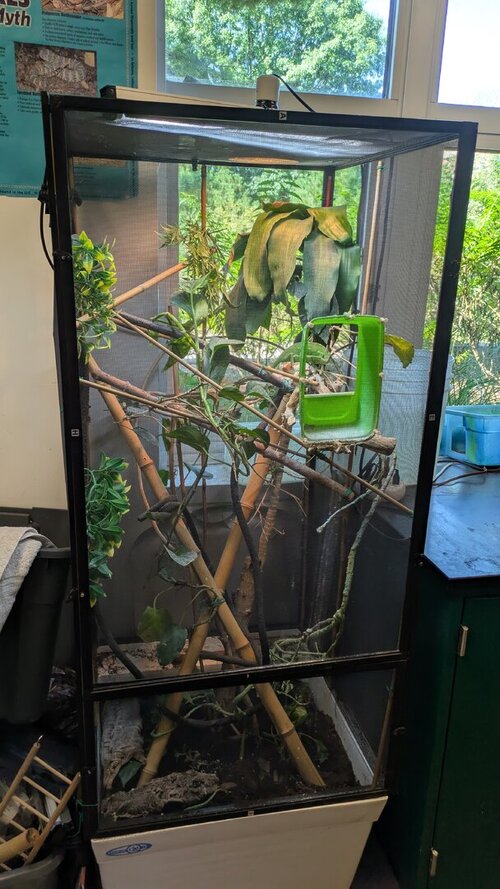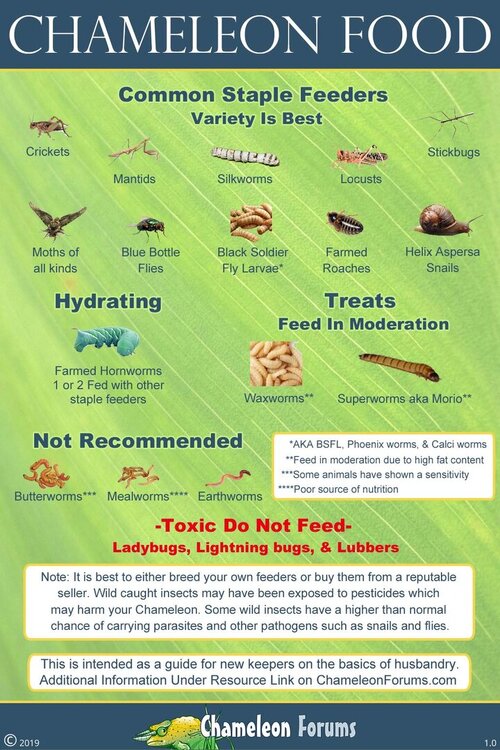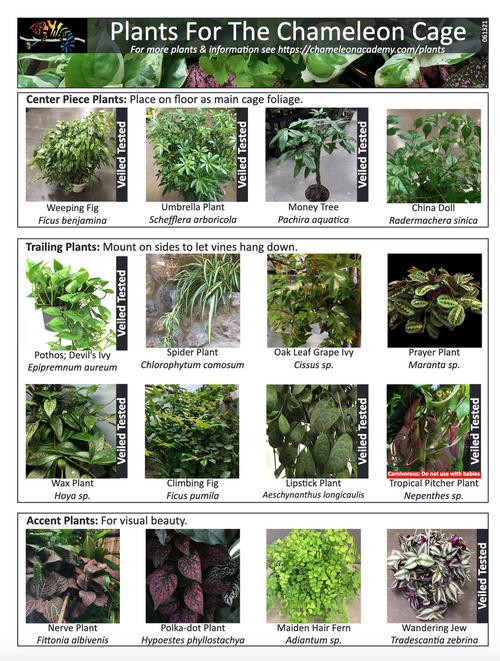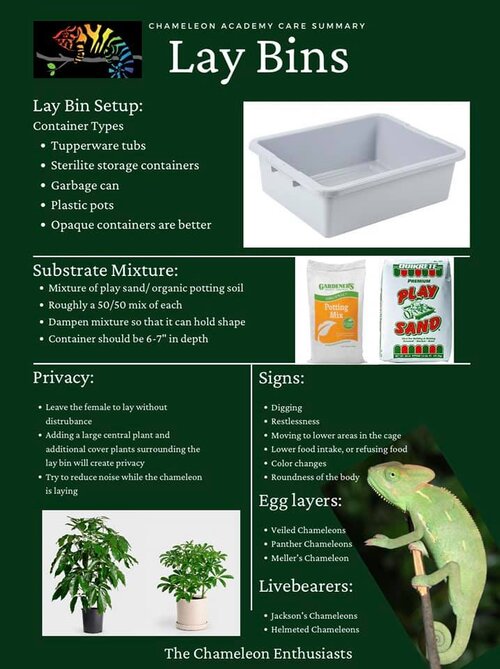Lizardlover1519
Member
Hi everyone I am going to give you all some info about my veiled chameleon, I want to do right by her so I just want to make sure I am doing everything right! My past 2 chameleons have gotten sick and passed away and I did everything I could so I really want to do everything right this time around.
Chameleon Info: Name is Lumi
Cage Info:
Current Problems/questions -
1. She seems skinny but eats a lot? CURRENT WEIGHT TODAY: 66.5g
2. I think she takes bites out of the plants? I see little bite sized chunks out of the leaves every once and a while.
3. What other bugs should I introduce to her diet and how often?
4. I know females can have issues with egg binding, what is the best way to prevent that and are we sure she is a female?
Thank you
Thank you to everyone on this website you have helped me so much in the past!
Chameleon Info: Name is Lumi
- Your Chameleon - Lumi is a suspected female, most likely about 1 year old. She has been in my care Since January of this year (we estimated she was a couple months old).
- Handling -I handle her a few times a week, since she is a juvenile I am trying to desensitize her as much as possible, she is also housed in a college education herpetology lab so I would like to eventually use her for outreach events, She seems to tolerate being held and is normally a very bright green color when being handled.
- Feeding - My chameleon gets a variety of inverts, She mainly gets gut loaded crickets and dubia roaches (I am going to maybe start feeding hornworms and silkworms once a week to increase hydration). She is fed every other day. Each feeding she gets about 15 crickets or 10 dubia roaches appropriately sized. I am gut loading feeders by adding veggie scraps into the cricket tank (I am not worried about my gut loading as the crickets I have are part of the herpetarium I manage so they are gut loaded properly).
- Supplements - I use Zoo med repti calcium no D3 on every feeding and then Repashy's LoD calcium plus about 2x per month dusted on feeders
- Watering - I have an automated misting system that sprays the cage for 1 minute every 3 hours, it is deliberately pointed at leaves and places where water can pool easily. The mister shuts off at night. I also do a thorough mist of the cage with a hand mister about once a day and thoroughly wet everything in the cage. The cage is not in a place where I can observe it often but I have seen her drink from the drops of water on the leaves after misting. Should I include a dropper as well?
- Fecal Description - Briefly note colors and consistency from recent droppings. Has this chameleon ever been tested for parasites? Droppings are normal for the most part I noticed an abnormal dropping a few days ago and posted it on here, a picture is added at the bottom. This chameleon has never been tested for parasites.
- History - This chameleon was surrendered to my vet clinic where I work after someone found her and her small enclosure in a dumpster behind their apartment complex in the middle of winter in the snow.
she had both eyes closed and could not eat on her own and is now thriving, when she first arrived at the clinic she was given a round of injectable ceftazidime and steroidal eye drops and has since bounced back remarkably well. The vet was astonished she made a recovery.
Cage Info:
- Cage Type - My cage is all screen, it is 4ft tall by 2ft by 2ft with a planter underneath.
- Lighting - UVB: Arcadia Reptile D3 T5 6% UVB First Reptile lamp bulb in a fixture made specifically for this bulb. This gets replaced every 6 months. Heat: Heat lamp 75W UVA basking light , natural daylight heating bulb (Amazon link to bulbs), Cage is also next to a window. The bulbs are on for 12hrs and off for 12hrs.
- Temperature - Bottom to top of tank ambient is 65-80F Basking spot is 85-90F. Lowest overnight temp is about room temp ~ 65-75F the room is kept relatively warm. I have a thermometer at the top of the cage non basking side and one at the bottom of the cage. I als use a temp gun every once and a while. I also have the heat lamp attached to a thermostat so that the basking temp never exceeds 90 F.
- Humidity - My humidity levels are around 60% at the top of the cage and about 80% at the bottom, I have an automatic sprayer and live plants in the tank to keep up humidity, and I give the tank a very thorough mist once a day. I use a hygrometer at the top and bottom to measure this.
- Plants - I have multiple live plants in this enclosure, I have pathos, a hibiscus tree and a tall Dracaena fragrans (corn plant)
- Placement - Where is your cage located? Is it near any fans, air vents, or high traffic areas? At what height is the top of the cage relative to your room floor? My cage is located in a lab that specifically houses reptiles it has good airflow and not any cold air vents or fans, the floors are heated and it is always kept at a good nighttime temperature. It is a high traffic area but she is not showing signs of stress as she has lots of hiding spaces in her tank.
- Location Kirksville, Missouri USA
Current Problems/questions -
1. She seems skinny but eats a lot? CURRENT WEIGHT TODAY: 66.5g
2. I think she takes bites out of the plants? I see little bite sized chunks out of the leaves every once and a while.
3. What other bugs should I introduce to her diet and how often?
4. I know females can have issues with egg binding, what is the best way to prevent that and are we sure she is a female?
Thank you
Thank you to everyone on this website you have helped me so much in the past!

